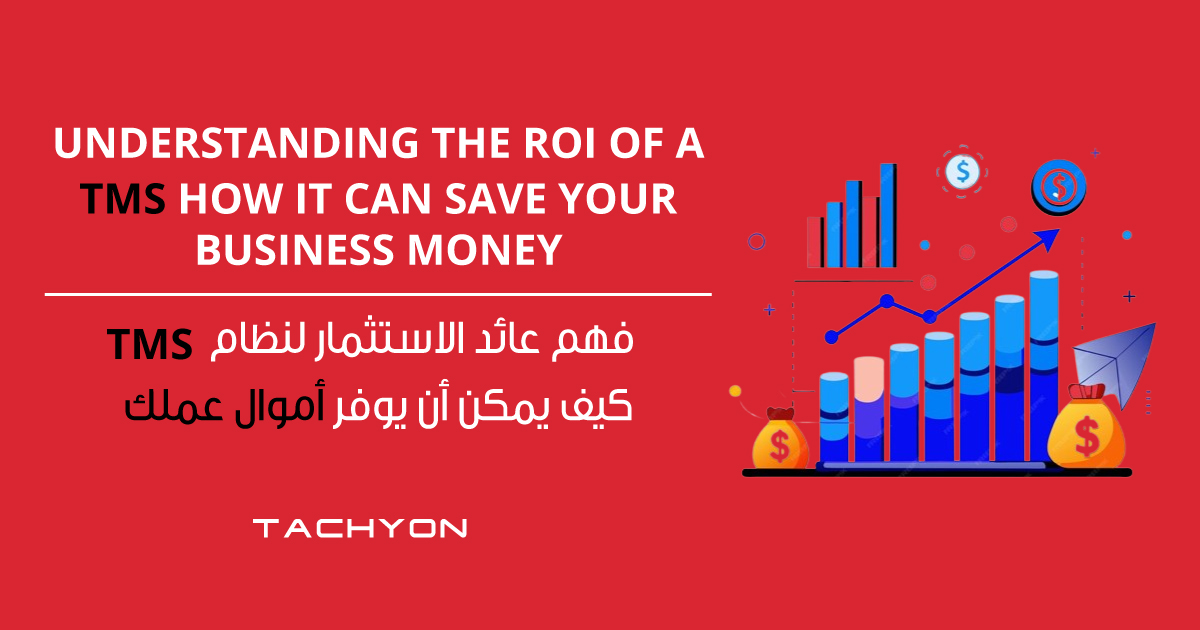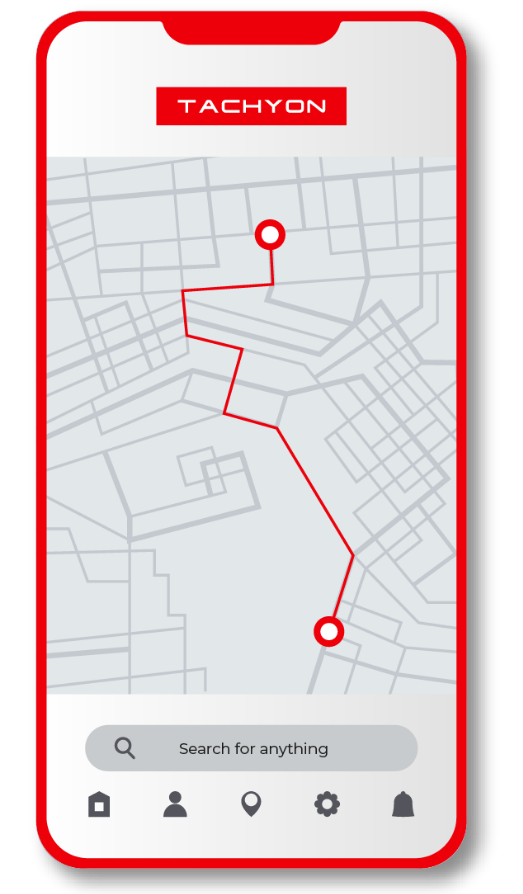Not surprisingly, almost every industry now considers transportation costs as the main element and as a primary competitor. Solutions like Transport Management Systems (TMS) are increasingly popular in companies to provide simple control of their goods transportation. It even concurrently reduces financial losses from delays or other unplanned events like road accidents. Tachyon aims to revolutionize the logistics sector and give the stakeholders exceptional value and service. The below guide is a detailed description on how ROI of a TMS saves your business money.
The Transportation Management System (TMS) is among the fundamental technologies used in logistics nowadays. A Transportation Management System (TMS) is a program for managing and maximizing transportation operations used by businesses. Usually featuring carrier selection, shipment planning, routing, tendering, tracking, goods audit, and payment, a TMS comprises. Using a TMS helps businesses to monitor their transportation operations better. It streamlines manual tasks and guides carrier choice and routing decisions. Cost savings, better on-time delivery rates, and more effective use of resources, including labor and gasoline, can all follow from this.
To offer a broader picture of supply chain activity, a TMS can be installed as a stand-alone solution. Businesses can even connect it with other supply chain management systems, such as Enterprise Resource Planning (ERP) systems or Warehouse Management Systems (WMS). For businesses depending on transportation to deliver goods and resources, a TMS is an indispensable tool. It may help them increase efficiency, lower expenses, and improve customer experience overall. Thus, no doubt, technology has improved the shipping sector’s sustainability and efficiency. Advanced route optimization, for example, has helped transportation businesses cut the miles driven, therefore lowering fuel consumption and general emissions.
ROI is a popular metric because it is easy to use and can be used in many situations. ROI is basically a simple way to figure out how profitable a purchase is. In this case, “ROI” could mean the return on an investment in stocks, the return a company gets from expanding a factory, or the return made on a real estate deal. The calculation isn’t too hard, and it’s not too hard to figure out what it means for all of its many uses. If the ROI of an investment is net positive, it’s a good idea to make it. However, if there are other opportunities with higher ROIs, these signs can help investors get rid of the bad ones or pick the best ones. Also, buyers should stay away from negative ROIs, which means they lose money overall.
How to Use ROI
One may find the worth of almost any expenditure using return on investment. Businesses use it as a key performance indicator (KPI) to ascertain the cost of several assets. Investors use it to evaluate the capital gain of their initial investment. ROI provides the data you need to make a wise investment choice, therefore removing the uncertainty from corporate decisions. Many times, companies employ return on investment to ascertain the financial worth of:
- Hiring new employees
- Purchasing equipment
- Marketing efforts
- Sales strategies
- Expanding the company
- Acquiring another business
Before starting a new project or expenditure, many companies conduct cost-benefit analyses, including ROI. ROI is only as consistent as the data you enter into an investment model. Regarding the cost involved and the overall return you could get, try to be as realistic as you could. Like any estimate, ROI might be erroneous if the ones you rely on are overly optimistic or pessimistic.
Interesting Ways to Boost the ROI of Your TMS
Correct TMS implementation will help you to see more investment returns. Following the ideas below will help you to increase your results.
Start With a Comprehensive ROI Study
Whether you are ready to start with the implementation process or are still in search of the ideal TMS for you, doing a comprehensive ROI study for a TMS is absolutely vital.
Specify The Goals And Mission
Before the company adopts a TMS system, it should know its ultimate objective and picture what success for the company would look like. This implies outlining its goals and mission.
Have a Well-Defined Strategy
There must be a well-defined strategy outlining the several responsibilities each person has for the execution of the project. This guarantees that everything goes accordingly and that everyone stays responsible for any mistakes that might develop during the operation.
Examine Contemporary TMS Systems
Outdated systems will probably prohibit the new technology from generating any value. Look for ways to modify any of these present processes to get the best of the TMS.
Make Use of The Cloud
Cloud-based TMS has the simplicity of access for several groups from several sites. Any feature upgrades happen automatically without stopping the process.
Monitor Your Progress
Track the success after your TMS is in place. See whether it is satisfying the goals you set for yourself. One can accomplish this by recording the development and sharing the outcomes with the team members and interested parties.
TMS Optimization
Optimization should be part of your TMS since it enhances system performance. This will help to maximize your return on investment. Be sure the system offers proven optimization features.
Is ROI Calculated Annually
Although ROI can be computed over any length of time, its calculation is most usually annual. This offers a consistent performance metric and facilitates the comparison of many assets. Nonetheless, depending on the particular context and requirements of the study, ROI might occasionally also be computed over shorter or longer periods. After accounting for cost, return on investment (ROI) essentially reveals how much money you have made—or lost—on an investment or project.
What to Consider When Calculating TMS ROI
Determining your TMS ROI and transportation management income is not easy since both qualitative and quantitative elements influence both. This is why we advise considering scope and pricing when evaluating the possible benefits your new program will bring.
TMS Scope
Your TMS needs a properly defined scope if it is to be effective. You will have to respond to a few questions to accomplish this, especially concerning future TMS usage. Think about the expected complexity of your paths and network.
TMS Cost
You can start looking for TMS suppliers that fit your requirements once you have established the extent of how you wish to use your transport management system. You should search for a vendor with open pricing policies and a user-friendly design.
What Are the Benefits of ROI
ROIs have the following advantages:
- Calculate with ease. There are a few numbers required to do the computation; all of them should be found in balance sheets or financial statements.
- Capability of comparative analysis. Its general use and simplicity of computation allow greater comparisons between companies regarding investment returns.
- For investments made in a particular company unit, ROI is connected to net income. For a team or corporation, this offers a better gauge of profitability.
What Are the Benefits of ROI
ROIs have the following advantages:
- Calculate with ease. There are a few numbers required to do the computation; all of them should be found in balance sheets or financial statements.
- Capability of comparative analysis. Its general use and simplicity of computation allow greater comparisons between companies regarding investment returns.
- For investments made in a particular company unit, ROI is connected to net income. For a team or corporation, this offers a better gauge of profitability.
What Can’t ROI Do
Regarding the risk of a possible investment, ROI is not able to inform you anything. It cannot indicate whether you have the means to seize a fresh investment prospect or whether a digital marketing campaign supports your whole marketing plan. Can ROI gauge the job satisfaction of your staff? Definitely not. Neither is it able to accomplish. Basically, ROI does not allow subtlety. Although it’s one element to take into account while balancing the advantages and drawbacks of an investment possibility, it should never be the only basis for a financial decision.
What are the Disadvantages of ROI
- Simple ROI ignores the length of the investment held.
- ROI ignores risk tolerance and age, the two most important factors while developing an investment plan.
- Depending on the formula—like transaction charges, taxes, and fees—ROI calculation could overlook the true cost.
- Every investor and company performs ROI estimates differently; hence, the comparison of investments is not exact.
Conclusion
Maximizing the ROI of an Enterprise TMS calls for a strategic approach. It emphasizes data centralizing, process automation, carrier selection, and routing optimization, and data analysis to spot areas for development. At Tachyon, we transform the logistics industry and provide our partners great value and service. Using these techniques will help businesses save a lot of money and enhance their transportation practices.
Frequently Asked Questions
What is ROI in transportation?
A return on investment (ROI) evaluates the performance of a facility, good, or service and helps determine its efficiency and effectiveness.
What are the benefits of the ROI model?
ROI is a way to figure out how much money you make from an investment compared to how much it costs.
How to create ROI?
To find a return on investment, you take the project’s actual or expected income and subtract its actual or estimated costs.
Can ROI be negative?
An investment can have a negative ROI, which means that the cost of the investment is higher than the return on it.





